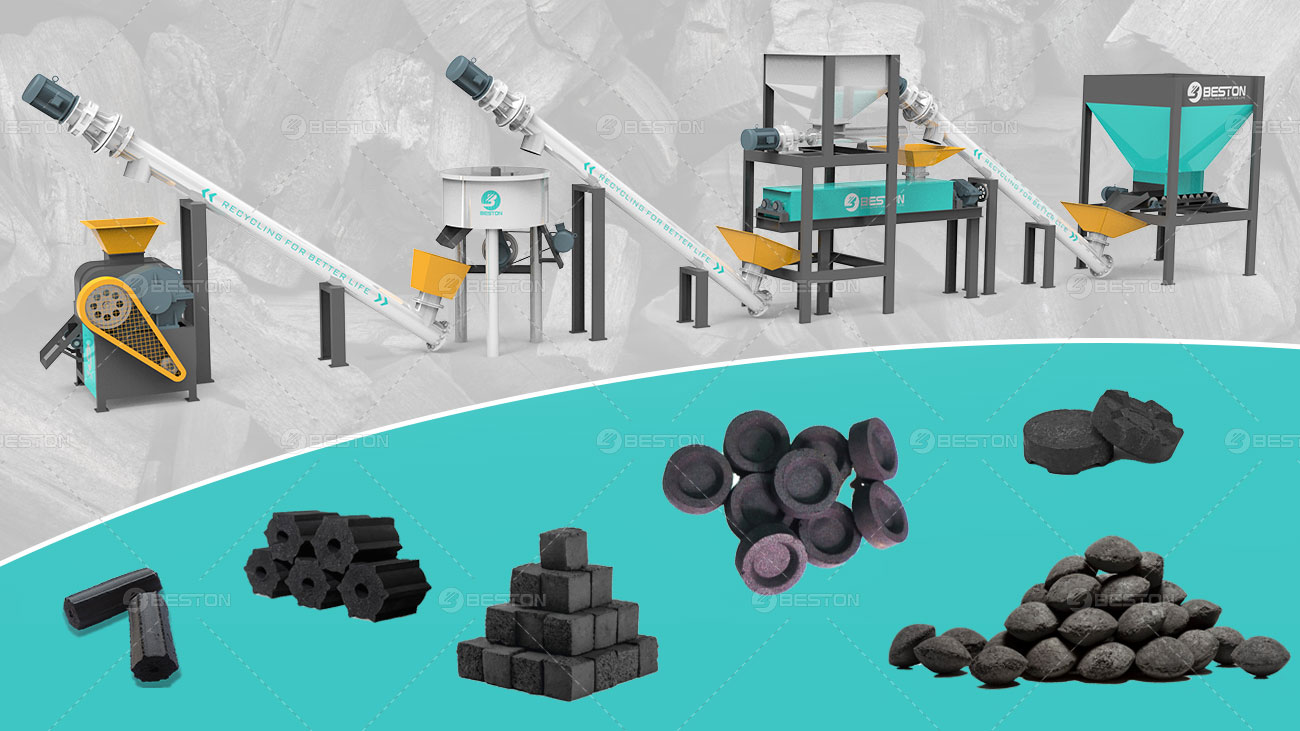Unlocking the Potential of Charcoal Briquetting Machine
In the realm of sustainable energy solutions, charcoal briquetting machines have emerged as a game-changer, offering a novel approach to biomass utilization and waste management. This comprehensive guide explores the intricacies of charcoal briquetting machines, elucidating their functionality, benefits, and applications.
Understanding Charcoal Briquetting Machines
Charcoal briquetting machines are sophisticated equipment designed to convert biomass residues into compressed charcoal briquettes through a mechanical process. These machines leverage hydraulic or mechanical pressure to compress biomass materials, such as wood chips, sawdust, agricultural residues, and charcoal fines, into dense and uniform briquettes.
Mechanism of Action
At the core of charcoal briquetting machine lies a robust compression chamber equipped with a die and plunger assembly. The biomass feedstock is fed into the chamber, where it undergoes compaction under high pressure. This compression process forces the biomass particles to bind together, forming solid briquettes with high calorific value and combustion efficiency.
Hydraulic vs. Mechanical Systems
Charcoal briquetting machines employ either hydraulic or mechanical systems to generate the requisite pressure for briquette formation. Hydraulic systems utilize hydraulic cylinders to exert immense pressure on the biomass feedstock, ensuring uniform compression and high-density briquette formation. In contrast, mechanical systems rely on mechanical presses or rollers to achieve similar results through mechanical force.
Advantages of Charcoal Briquetting Machines
Enhanced Energy Density
One of the primary benefits of charcoal briquetting machines is their ability to significantly increase the energy density of biomass residues. By compressing loose biomass materials into dense briquettes, these machines facilitate easier handling, storage, and transportation, while maximizing energy content per unit volume.
Waste Valorization
Charcoal briquetting machines play a pivotal role in waste valorization by converting agricultural residues, forestry waste, and other biomass byproducts into valuable energy commodities. Instead of allowing these organic materials to decompose or contribute to environmental pollution, briquetting offers a sustainable solution for utilizing them as clean and renewable energy sources.
Carbon Neutrality
The utilization of biomass-derived charcoal briquettes promotes carbon neutrality by offsetting carbon emissions associated with conventional fossil fuels. Since biomass feedstock sequesters carbon during its growth phase, the combustion of charcoal briquettes merely releases the carbon previously absorbed by plants, resulting in a closed carbon cycle and minimal net carbon emissions.

Applications of Charcoal Briquettes
Cooking and Heating
Charcoal briquettes serve as an efficient and eco-friendly alternative to traditional firewood, charcoal, and fossil fuels for cooking and heating purposes. Their uniform shape, consistent combustion properties, and high heat output make them ideal for use in households, restaurants, and industrial kitchens, enabling cleaner and more sustainable energy practices.
Industrial Processes
In industrial settings, charcoal briquettes find myriad applications in metallurgy, ceramics, and other manufacturing processes requiring high-temperature heat sources. From smelting and forging to drying and sintering, charcoal briquettes provide a cost-effective and environmentally sound fuel option, contributing to energy efficiency and emissions reduction in various industrial sectors.
Environmental Remediation
Charcoal briquettes can also be utilized for environmental remediation purposes, such as soil amendment, water filtration, and air purification. Their porous structure and adsorption properties make them effective agents for removing contaminants, odors, and impurities from the environment, thereby promoting ecosystem health and human well-being.
Considerations for Charcoal Briquetting
Feedstock Selection
The quality and characteristics of charcoal briquettes depend largely on the choice of feedstock used in the briquetting process. Different biomass materials exhibit varying moisture content, particle size distribution, and chemical composition, influencing the performance and properties of the resulting briquettes. Careful selection of feedstock is essential for optimizing briquette quality and performance.
Binder Addition
In some cases, the addition of binders or additives may be necessary to improve the cohesion and stability of charcoal briquettes, particularly when using low-density or fibrous biomass feedstock. Binders such as starch, lignin, and molasses can enhance the binding properties of briquettes, ensuring uniform combustion and reduced emissions during use.
Equipment Maintenance
Proper maintenance and calibration of charcoal briquetting machines are critical for ensuring optimal performance and longevity. Regular inspection, lubrication, and replacement of worn components help prevent downtime and maximize productivity. Additionally, operator training and adherence to safety protocols are essential for safe and efficient operation of briquetting equipment.
Future Directions and Innovations
As the demand for sustainable energy solutions continues to grow, ongoing research and innovation in charcoal briquetting technology are poised to unlock new opportunities and applications. Advancements in material science, process optimization, and automation hold the potential to further enhance the efficiency, versatility, and environmental sustainability of charcoal briquetting machines.
Conclusion
Charcoal briquetting machines represent a versatile and sustainable solution for biomass utilization, waste management, and clean energy production. By compressing biomass residues into high-density briquettes, these machines offer enhanced energy density, waste valorization, and carbon neutrality benefits. From household cooking to industrial manufacturing, charcoal briquettes find diverse applications across various sectors, promoting environmental stewardship and resource efficiency. Moving forward, continued research and innovation in charcoal briquetting technology are poised to drive further advancements and expand the reach of this promising renewable energy solution.